From potholes to stray nails and screws, your tires can encounter a lot of hazards on the road. And when they become damaged or go flat, you might be wondering whether you should purchase a new set or get the tire repaired professionally.
Not every flat or punctured tire can be fixed, but there are other instances where you can get the tire — and your entire car — back on the road with a quick repair. Read on to learn what kind of tire damage can be repaired and when you should get a replacement.
Puncture location and severity of damage can often be the deciding factors between getting a tire repaired vs. replaced. If you've got a tire that's been punctured in the tread area and it doesn't measure more than 1/4 of an inch (6mm) in diameter, a simple repair may do the trick.
If the tire has two punctures, getting a tire repaired may still be an option as long as the punctures are at least 16 inches apart and the maximum number of repairs does not exceed a total of 2 in the tire. Any more punctures than that, and you should consider getting a new tire. Punctured tires will likely need to be replaced if:
Durable run-flats, such as Bridgestone DriveGuard tires, can often buy you a little more time in a flat tire situation. But if driven on with less than 15PSI, they may not be repairable. To prevent this issue on run flats and otherwise, avoid driving your vehicle if you have a flat or are low on air.
If you notice a bubble in your tire's sidewall, this has likely been incurred by high-impact damage. Factors like driving on a flat, hitting a pothole or curb the wrong way, riding over speed bumps or railroad crossings too quickly, or overloading your tires can all lead to this issue.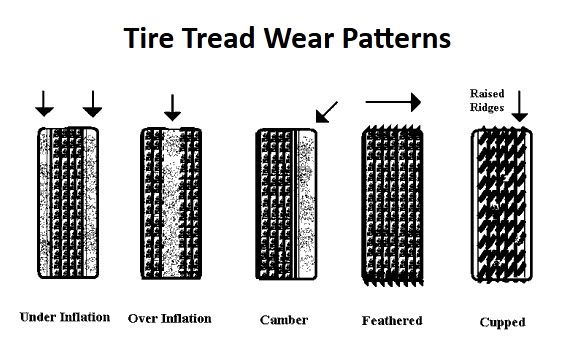 Although this tiny bulge may not seem intimidating, tires with side bubbles are not repairable, and you should have the tire replaced as soon as possible.
Although this tiny bulge may not seem intimidating, tires with side bubbles are not repairable, and you should have the tire replaced as soon as possible.
Repaired tires can often be mended again if the damage doesn't compromise a previously repaired area. For example, if you have a nail-in-tire situation, you may be able to do a quick repair if the puncture location doesn't overlap with a previous tire injury and the repair was done properly. If it does overlap, you will likely need a replacement.
Oftentimes, affected tires will need to be replaced following a major incident. If the tire has sustained serious damage in a crash, such as significant cuts or tread separation, it should be replaced, not repaired.
You might be tempted to do a quick fix when you do have a flat or damaged tire. Here are two that can be used in emergency or short-term situations but shouldn't be considered long-term tire repairs:
These fast fixes are a double-edged sword. They'll help you get your car to a local Firestone Complete Auto Care, but don't count on them to keep you on the road for very long. Tire sealants can freeze in cold weather, damage your tire pressure monitoring system, and prove ineffective at repairing any tire damage that's more serious than a slow leak or small hole. It's also important to note that our technicians will not be able to fix punctures in tires with emergency temporary sealants.
They'll help you get your car to a local Firestone Complete Auto Care, but don't count on them to keep you on the road for very long. Tire sealants can freeze in cold weather, damage your tire pressure monitoring system, and prove ineffective at repairing any tire damage that's more serious than a slow leak or small hole. It's also important to note that our technicians will not be able to fix punctures in tires with emergency temporary sealants.
Again, these are quick fixes that aren't meant to enable long-term use of a punctured or damaged tire. When considering a flat tire patch or replacement, remember that a patch doesn't fill in the hole left by a puncture — while a plug doesn't offer a permanent seal. In short, patching or plugging alone are never adequate long-term solutions. That's why at Firestone, our technicians can use a patch-plug combo to provide an adequate long-term solution for some tire punctures.
To ensure your tire is safely repaired or replaced, it's best to have it inspected and serviced by a trained technician. Visit your local Firestone Complete Auto Care and ask about our tire repair services. Your safety is our priority, and we back all of our work with a triple promise that guarantees your repair will be Fixed Right, Priced Right, Right on time.
Visit your local Firestone Complete Auto Care and ask about our tire repair services. Your safety is our priority, and we back all of our work with a triple promise that guarantees your repair will be Fixed Right, Priced Right, Right on time.
Now that you know when to repair vs. replace a car tire, schedule your appointment today!
By John Goreham G+ Jun 29 2020 - 11:03am
Many vehicle owners feel frustrated when they have a nail in the tire and are told by a tire shop that the tire cannot be repaired. Here are a few common reasons why it can’t be fixed.
Advertisement
You just either rolled up to a tire shop on a flat, were towed in, or drove in with your spare on the car and the flat in the trunk. You have important things to do today, and since you can clearly see there is a nail in the tread, you expect to be told that the nail can be pulled out and the tire fixed quickly. However, after a quick glance, the tire shop says, “No can do, Bubba. ” They are not just trying to sell you a new tire. There are real reasons why many flats cannot simply be patched.
” They are not just trying to sell you a new tire. There are real reasons why many flats cannot simply be patched.
Reason 1 Why Your Tire Cannot Be Repaired – You Drove On The Flat
Modern tires have an inner structure of the sidewall that is not designed to support your vehicle when uninflated. You can usually get away with a flat tire rolling without air for a short distance – think yards, not miles. However, if you just drove 10 minutes on the flat, you destroyed that important sidewall structure and the tire cannot be repaired.
Related Story: Tire Shortages and Delays: Not Just For Tesla Owners Anymore
Reason 2 Why Your Tire Cannot Be Repaired – Your Puncture Is In The No Repair Zone
Modern tires also need to be puncture-free along the sides and in from the sides about 20% on both sides of the tire. If your puncture is near the sidewall you are out of luck. Tire shops need to keep customers safe, and they follow the standard industry guidelines and will not repair a puncture too close to either sidewall. They should err on the side of caution to protect your safety and protect themselves from liabiility. Most do.
They should err on the side of caution to protect your safety and protect themselves from liabiility. Most do.
Reason 3 Why Your Tire Cannot Be Repaired – Your Tire Has Other Issues
If you have a bubble, a tear, or a big honking carbuncle on the side of your tire, it is unrepairable. Even if that is NOT why your tire went flat. If you have any area of the tire worn beyond the tread wear indicators, your tire is not repairable. If your tire is older than the internet, your tire is not repairable. If your tire is unevenly worn and any of the metal parts inside are visible your tire is not repairable. We can keep going. Basically, if your tire was not safe before the puncture, your tire shop would be crazy to try to repair the puncture. According to NHTSA, hundreds of people are killed each year due to tire failure. Your tire shop does not want you to be killed due to tire failure with the receipt for the repair sitting in the cupholder.
Reason 4 Your Tire Cannot Be Repaired - You Have Run Flat Tires
Many shops will not repair a run-flat tire that has had a puncture.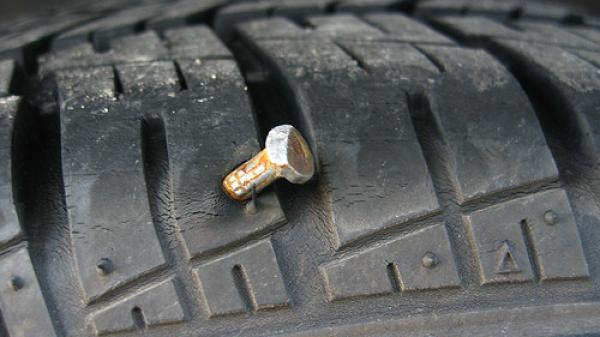 Although run-flats are designed to get you to a shop or home when you have a puncture, they may not have been designed to then be repaired and continue in service after having been driven when deflated. This is one reason we give run-flat tires like those on BMW vehicles a thumbs-down.
Although run-flats are designed to get you to a shop or home when you have a puncture, they may not have been designed to then be repaired and continue in service after having been driven when deflated. This is one reason we give run-flat tires like those on BMW vehicles a thumbs-down.
Reason 5 Your Tire Cannot Be Repaired - The Puncture Is Too Large
If the puncture in your tire isn't just a normal nail or screw, but rather a chunk of metal, your repair shop will tell you to buy a new tire. Sometimes the metal bruises or gouges the tire either inside or outside and the plug and patch method of repair is simply not safe to perform.
Reason 6 Why Your Tire Cannot be Repaired - It Was Struck By A Meteorite
We recently had a puncture that we surmised was a meteorite strike. Yes, it sounds crazy, but read our story and tell us if you have a better guess.
Take care of your tires and they will take care of you. If you have a tire-repair story to tell, feel free to offer it up in the comments below.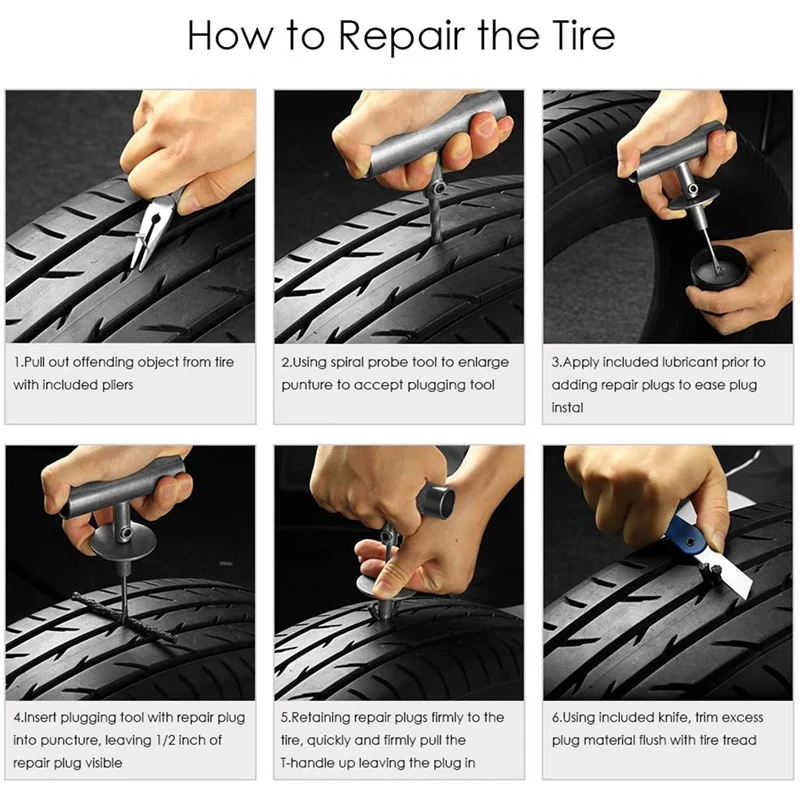
John Goreham is a life-long car nut and recovering engineer. John's focus areas are technology, safety, and green vehicles. In the 1990s, he was part of a team that built a solar-electric vehicle from scratch. His was the role of battery thermal control designer. For 20 years he applied his engineering and sales talents in the high tech world and published numerous articles in technical journals such as Chemical Processing Magazine. In 2008 he retired from that career to chase his dream of being an auto writer. In addition to Torque News, John's work has appeared in print in dozens of American newspapers and he provides reviews to many vehicle shopping sites. You can follow John on Twitter, and view his credentials at Linkedin
Images by John Goreham. Use with permission only.
Automotive News
News Opinion
Toyota News, Pricing and Reviews
Follow Torque News on YouTube, Twitter and Facebook.
Tesla Semi, Cybertruck Are Few of Several Cars To Feature a 1000-Volt Powertrain
The Famous Tesla Semi Driving 500 Miles, Fully Loaded, on a Single Charge
More Recent Videos
Large loads fall on the tire during operation. Especially on trucks. First of all, the tire pattern suffers, retreading is used to eliminate the problem. It is worth understanding the features of this process.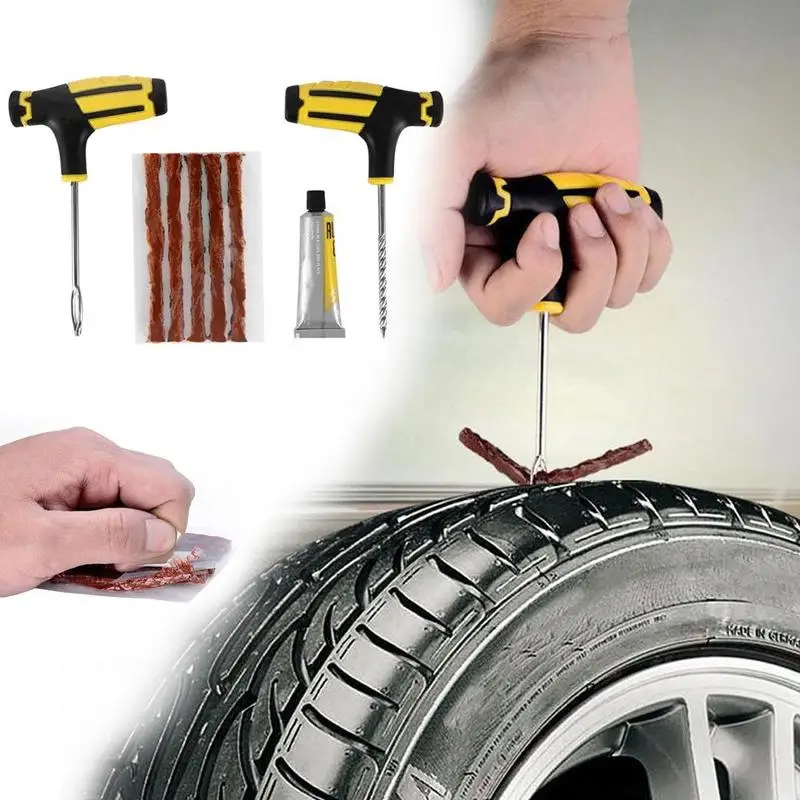
When talking about tire retreading, they mean the ability to create a new pattern to replace the erased one. The work is fairly frequent and well-performed. According to statistics, about 70% of trucks in Europe use such tires. Actually, the technology came to us from there, although it was known for a long time in our country.
Restoration of the tire is based on the high durability of the truck rubber carcass. It lasts a very long time unlike the tread. Therefore, the drawing can be updated.
Tires are technically almost the same as before the repair. However, there are still some minor limitations. This method can only be used for tires that are not used at high speeds.
Separately, it is worth considering whether all tires can be restored. Here you need to take into account several nuances, we will analyze them.
 If the tire has served for more than 5 years, it is not recommended to restore the tread on it.
If the tire has served for more than 5 years, it is not recommended to restore the tread on it. These are the main limitations for doing this kind of work.
In addition to the above, it should be borne in mind that not all tires can be restored. First of all, we are talking about rubber designed for high-speed passenger cars. It is not recommended to drive on retreaded tires at high speeds, it is not known how the tread will behave in such conditions. In general, cutting is not performed on passenger tires.
One way is to cut the tread.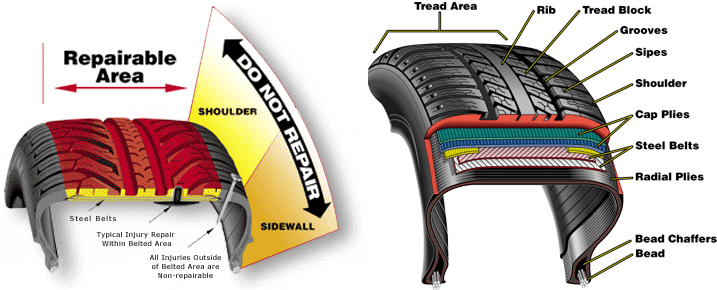 This technique is considered the simplest, but it is rarely used.
This technique is considered the simplest, but it is rarely used.
Work is done by cutting the tread along the old grooves. Moreover, the tread goes deep into the rubber. This leads to a reduction in the breaker layer.
The main disadvantage of this solution is the decrease in bus reliability. The rubber layer is reduced. The risk of damage to the tire, on the contrary, becomes much higher.
The more common method is tread welding, which avoids safety issues. Technically, it can be performed in different ways, each provides a sufficiently high efficiency.
There are two methods of tire retreading by hard welding.

Visually inspect the tire before starting work. The tire must not have any damage. Particular attention is paid to the frame, it should not have cuts and other significant faults. If during the inspection a good condition of the tire is revealed, it is possible to use the cold welding method. Let's consider this process in more detail.
After restoration, the wheel must be tested on the stand. Without this, it is strictly forbidden to install it on a car. Some services give a guarantee for 40-50 thousand kilometers.
Without this, it is strictly forbidden to install it on a car. Some services give a guarantee for 40-50 thousand kilometers.
The hot method is slightly different. To begin with, the old tread is also cut off here. The frame is inspected for damage. If they exist, they are eliminated.
Next, a raw rubber tread tape is wound on the frame. The resulting blank is sent to a press for vulcanization. In general, the work repeats the steps for creating a new wheel. The protector is formed by a press.
Visually distinguishing a retreaded tire is not always easy. Especially if they did the work in specialized workshops. The tread, even after artisanal processing, does not differ from the “factory” one. You can look at the sidewall, it is not being repaired, and here you can see small cracks and scuffs.
Many manufacturers have their own workshops for the restoration of tires, such work can be done by large network services.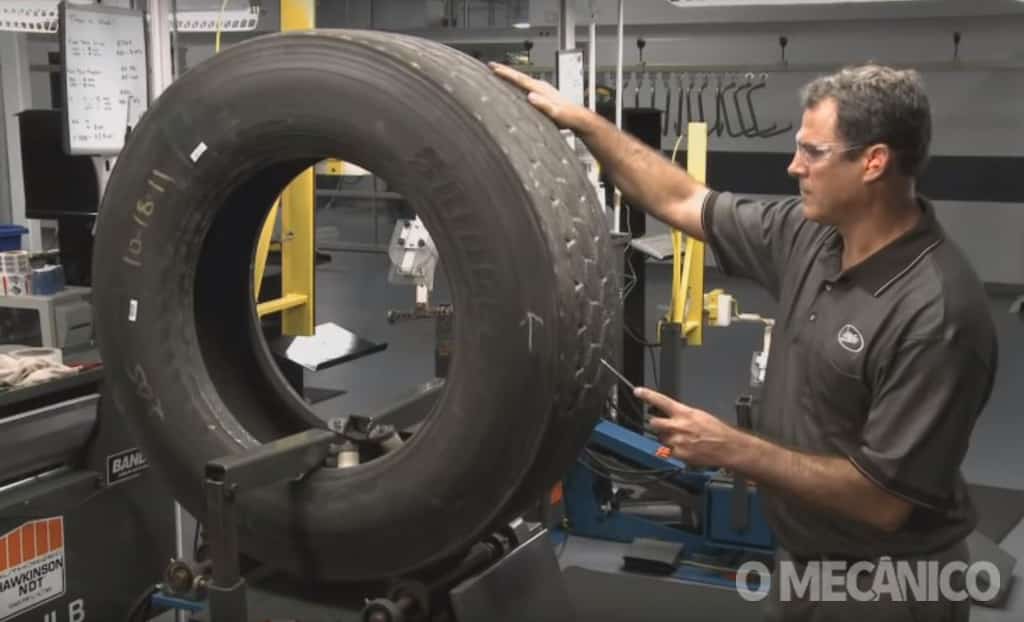 They label similar tires:
They label similar tires:
Another way to define remanufactured tires is a reduced cost. This method does not always work.
It is recommended to restore rubber 2 times. In some cases, a third restoration is allowed. It cannot be used further.
Retreaded tires do not differ much in terms of technical characteristics. They are quite usable. Only truck tires are restored.
In one of the previous articles, we talked about how to properly dispose of car tires. This is indeed a very serious problem, because the number of discarded but not properly disposed of tires in Russia is measured in millions of tons. Another opportunity to reduce environmental damage is the retreading of used tires.
The idea of extending the life of car tires dates back to the last century.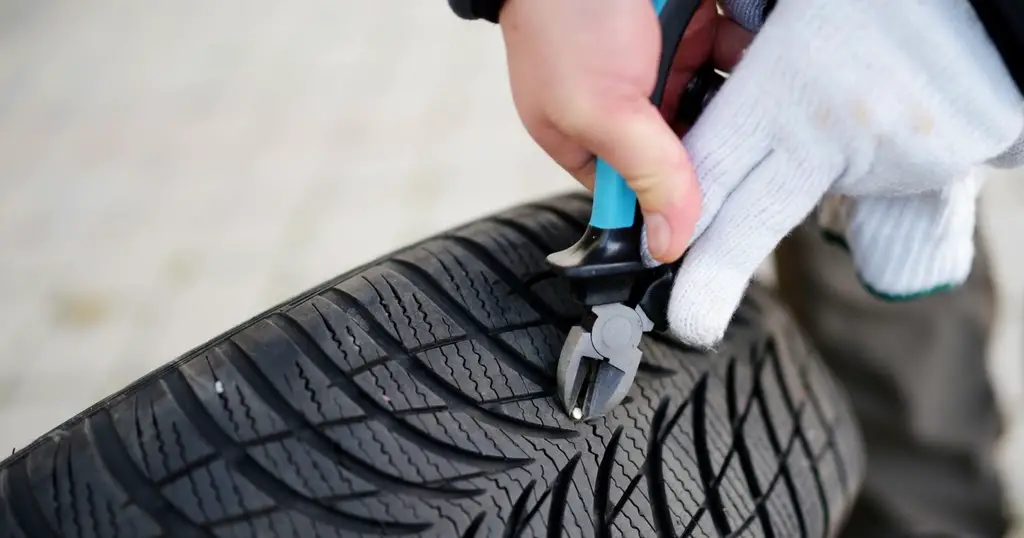 Always and at all times, zealous car owners wanted more resource from tires. The most widespread are two technologies - the replacement of the tread tape and the so-called recutting of the tread (regruving). Those who remember the times of the USSR are probably familiar with the latest technology - during the years of total shortage it was a popular way to extend the life of tires, including cars. Of course, this happened with varying success - for example, retreaded tires could explode while driving due to the destruction of the cord.
Always and at all times, zealous car owners wanted more resource from tires. The most widespread are two technologies - the replacement of the tread tape and the so-called recutting of the tread (regruving). Those who remember the times of the USSR are probably familiar with the latest technology - during the years of total shortage it was a popular way to extend the life of tires, including cars. Of course, this happened with varying success - for example, retreaded tires could explode while driving due to the destruction of the cord.
The second technology is the so-called welding, that is, the replacement of the tread tape with a new one, using a cold or hot method. Currently, this is the most popular method of tire retreading, which, however, has a number of limitations. Let's look at each technology in turn.
To begin with, the most important thing. Car tire carcasses are not designed to be reused, so they cannot be restored in any way! Everything that will be said about retreading applies only to "commercial" tires for trucks, construction equipment and buses. These tires have a strong all-metal carcass that can withstand much more than the tread, as well as a special design designed for two to three times recovery.
These tires have a strong all-metal carcass that can withstand much more than the tread, as well as a special design designed for two to three times recovery.
First, let's talk about regrooving the tread, or, as it is also called, regrowing. This is a procedure for deepening the tread with a hand-held cutting tool. Of course, this can not be done with any tires, but only with those that have the Regroovable marking.
Image: Yokohama
In such cases, the design of the tire implies an additional layer of rubber at the base of the tread, which allows you to deepen the pattern by about 3 millimeters, thereby “winning” another 35-40 thousand mileage. The optimal moment for recovery is tread wear up to 3 mm.
Image: Michelin
This retreading method is considered to be the most inexpensive - spending only 3-5% of the cost of a new tire on regrooving, you can get another 20-30% of the original resource.
Regrowing also has disadvantages. The success of the operation depends entirely on the quality of the framework and the skill of the specialist performing the recutting. Some tire brands allow multiple regrooving for certain models, but after that, the tread must still be replaced. In addition, in a number of countries, the installation of "undercut" tires on the front axles of buses is prohibited at the legislative level.
The success of the operation depends entirely on the quality of the framework and the skill of the specialist performing the recutting. Some tire brands allow multiple regrooving for certain models, but after that, the tread must still be replaced. In addition, in a number of countries, the installation of "undercut" tires on the front axles of buses is prohibited at the legislative level.
Retreading, or changing the tread band, is the most common way to retread truck tires, allowing them to recover at least 50-60% of their original life. Retreaded tires are widely used in all world markets, for example, in Europe they account for more than half of total sales.
Given the high quality of the tire carcass, welding can be performed repeatedly, increasing the tire life up to 450-500 thousand kilometers. Hardfacing can be cold or hot. Let's analyze the differences between these technologies.
When retreading car tires in small factories, the cold method is most often used.
It looks like this. The worn tire is placed in a special machine, where the tread layer is removed from it with a cutter. The breaker layer is carefully inspected for defects, which are repaired using pneumatic tools. The next stage is extrusion, in which the breaker is covered with a layer of raw rubber covering all defects. After that - another layer of raw rubber.
Images: Nokian Tires
Next, the tread tape is applied to the tire. As a rule, all major tire manufacturers produce such tapes, for example, Nokian Tires calls such treads Noktop and E-Tread. An interesting feature of the Noktop tread is the two-layer structure. A softer top layer provides improved traction in winter. By spring, it wears off, revealing a more rigid tread, optimal for use at positive temperatures.
Image: Nokian Tires
The assembled tire is placed in a so-called envelope, from which the air is evacuated. Next, the tires are placed in an autoclave, where, at a pressure of about 4 atmospheres at a temperature of 110 degrees Celsius, the vulcanization process takes place.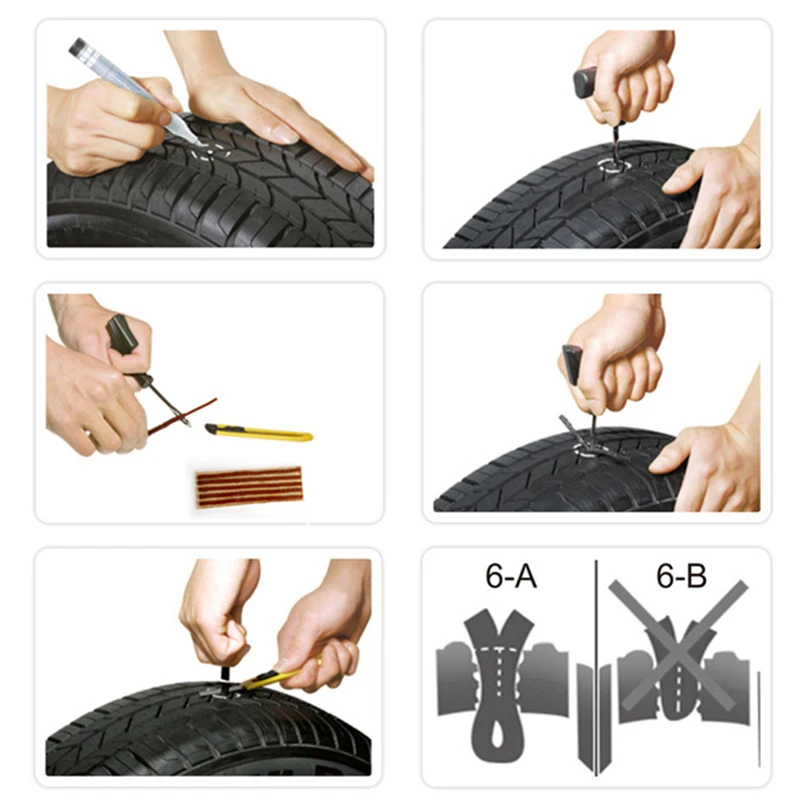 As a result, the tread is tightly connected to the tire carcass.
As a result, the tread is tightly connected to the tire carcass.
The second technology - hot vulcanization - is characterized by the highest quality of recovery, but due to its high cost and energy consumption, it is used only in large-scale industries.
Image: GoodYear
Hot welding is performed at 180 degrees Celsius and its main difference from the cold process is that a large layer of raw rubber (including sidewalls) is applied to the prepared carcass and then vulcanized with a press -shape on the tire is formed tread pattern - just like when creating a new tire.
For example, GoodYear has this technology called TreadMax or Next Tread. Technology means not only the tape itself, but also special equipment complete with technological maps.
Hot retread tires are more expensive than cold retread tyres, but their quality and service life are higher.
Modern technologies really make it possible to provide high-quality and even repeated retreading of truck and commercial car tires.